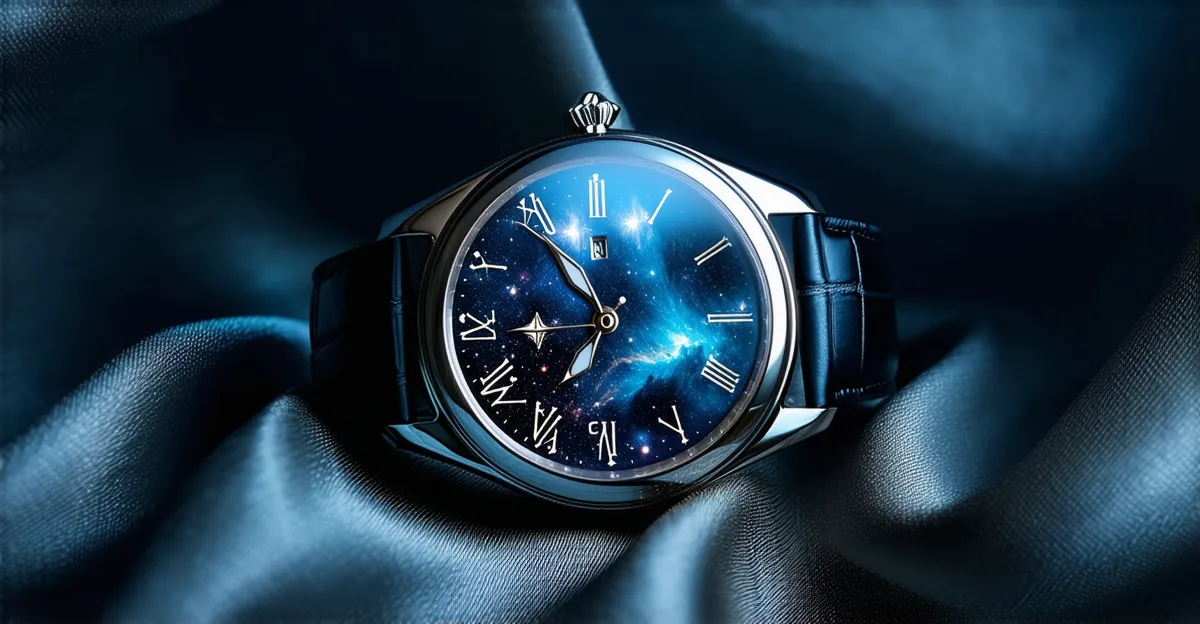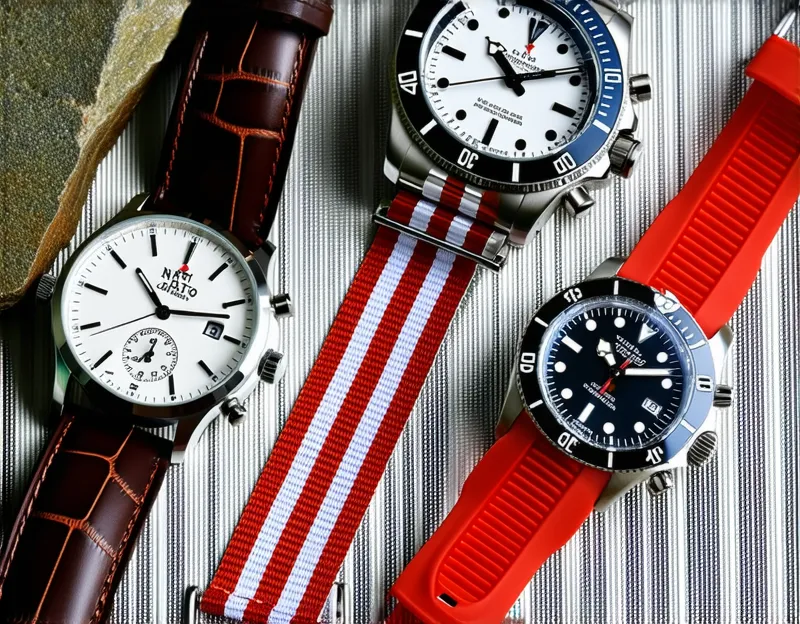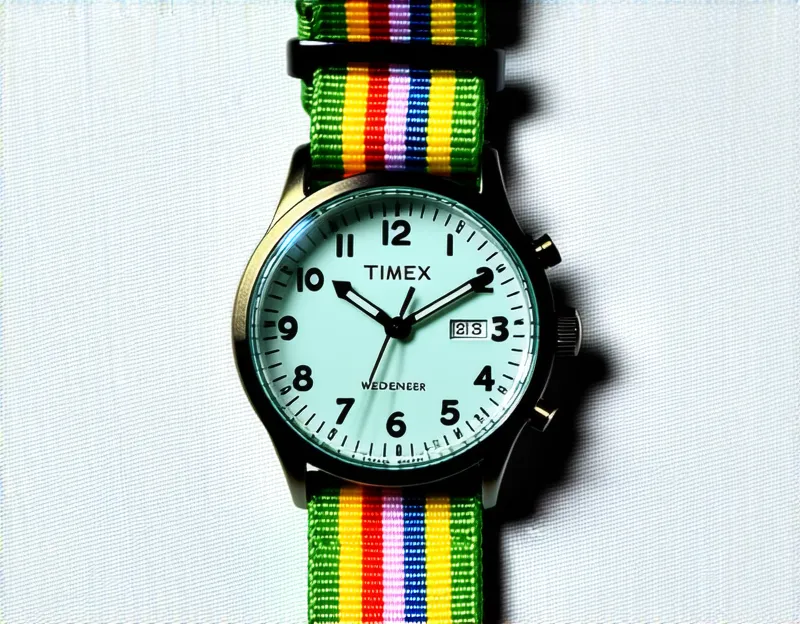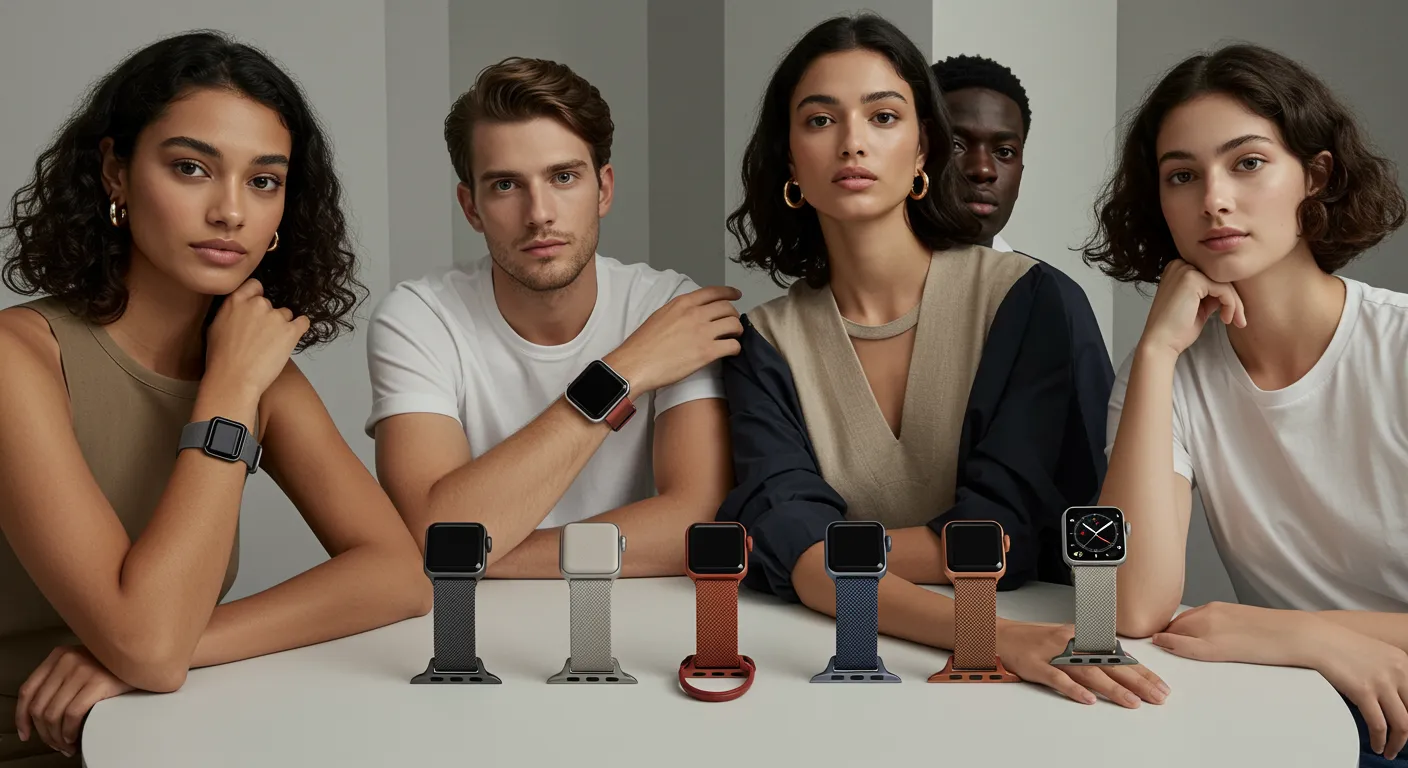
Timeless Style: Your Ultimate Guide to Watches for Every Occasion (Updated for 2024)
Quick Picks: Our Top Product Recommendations
A fast overview of our top picks—scroll to see all, or jump to details below.
Timeless Style: Your Ultimate Guide to Watches for Every Occasion
In an age where blinking screens on our smartphones constantly display the time, there's a profound, enduring appeal to the humble wristwatch. Far more than a mere timekeeping device, a watch is a personal statement, a piece of wearable art, a nod to tradition, and for many, a functional tool. Its history is a journey through human innovation, from simple sundials and water clocks to the intricate mechanical marvels and precise electronic components of today. The evolution of horology, the art and science of timekeeping, is a testament to humanity's relentless pursuit of accuracy, reliability, and indeed, beauty.

The watch on your wrist tells a story – not just of the passing minutes and hours, but of your style, your priorities, and sometimes, your adventures. From the boardroom to the beach, a watch is designed to complement the moment. The right watch can elevate an outfit, signal your professionalism, remind you of a cherished memory, or provide crucial data during a challenging activity. Understanding the diverse world of watches, from the intricate mechanisms of a mechanical watch to the multi-functional capabilities of a modern smartwatch, and knowing what's currently available and well-regarded in the market, is essential for making a truly informed purchase that will stand the test of time, both in terms of functionality and style. This guide is your deep dive into that world, providing not just historical context and fundamental knowledge, but also spotlighting currently recommended models based on recent market analysis to help you find the perfect timepiece for every facet of your life in 2024.

More Than Time: Exploring the Vast Landscape of Watches
At its core, a watch is a device designed to measure and display elapsed time. However, the execution of this function varies wildly, giving rise to a multitude of types and styles. The fundamental distinction lies in the movement, the engine that powers the watch.

Mechanical Watches: These are the traditionalists' choice, driven by complex systems of gears, springs, and wheels. Mechanical watches require winding, either manually (hand-wound) or automatically through the movement of the wearer's wrist (automatic or self-winding). They are revered for their craftsmanship, intricate engineering, and the smooth sweep of their second hand. While not typically as accurate as quartz watches over long periods without regulation, their appeal lies in their soul and the visible (or audible) reminder of the mechanical artistry within.
Quartz Watches: Powered by a battery and regulated by a vibrating quartz crystal, these watches are known for their exceptional accuracy, reliability, and affordability. The quartz movement is simpler, more robust, and requires minimal maintenance compared to a mechanical watch. They are the workhorses of the watch world, found in everything from everyday digital watches to sophisticated analog designs.
Beyond the movement, watches are defined by their purpose and aesthetic:
- Dress Watches: Characterized by their elegant, minimalist design. They often feature a simple dial, thin profile, and a leather strap. The focus is on sophistication and discretion, making them perfect companions for formal attire and business settings.
- Dive Watches: Built for underwater exploration, these watches are renowned for their water resistance (typically 200 meters or more), luminous markers for visibility in low light, and unidirectional rotating bezel used to track elapsed dive time. They are robust, often featuring a stainless steel case and bracelet, and their sporty aesthetic has made them popular even beyond diving.
- Pilot Watches: Originally designed for aviators, these watches prioritize readability, often featuring large dials, clear numerals, and functions like chronographs for timing or GMT hands for tracking multiple time zones. Some feature sophisticated calculations related to flight.
- Chronograph Watches: These watches include a stopwatch function, with sub-dials to measure elapsed seconds, minutes, and hours. Highly practical for timing various events, they also add a sporty and technical look to the dial.
- Field Watches: Drawing inspiration from military watches, these are built for durability and readability in rugged environments. They typically have simple, robust designs, luminous markers, and durable straps (often canvas or nylon).
- Smartwatches: Blending traditional timekeeping with modern technology, smartwatches connect to your smartphone, offering features like notifications, fitness tracking, GPS, music control, and even cellular connectivity. They represent the cutting edge of wearable technology.
Understanding these types and the underlying technology is the first step in navigating the vast world of watches and identifying what aligns with your needs and preferences.
Key Factors to Consider When Choosing Your Timeless Companion
Selecting the right watch is a thoughtful process. It's about more than just telling time; it's about finding a piece that fits your lifestyle, brings you joy, and serves its intended purpose. Here are the crucial factors to consider, explored in depth, incorporating insights from current market trends:
1. Movement Type: The Heartbeat of Your Watch: As discussed, this is a fundamental choice.
- Mechanical (Automatic/Hand-Wound): If you appreciate tradition, craftsmanship, and the romance of intricate machinery, a mechanical watch is compelling. Automatic movements are convenient for daily wear as they are powered by movement, while hand-wound watches offer a more intimate connection with the timepiece as you power it yourself. Be aware that mechanical watches can be more delicate and require periodic servicing (every 5-10 years is a general guideline, though this varies by movement and manufacturer) for optimal performance, and their accuracy can vary.
- Quartz: For maximum accuracy, reliability, and low maintenance, quartz is the clear winner. Battery changes are typically needed every few years. Quartz watches are generally more affordable and robust, making them ideal for everyday wear and situations where precision is paramount.
- Hybrid/Smartwatch: These bridge the gap. Some feature traditional hands over a digital display, while others are fully digital. The choice here is driven by the desired technological features and connectivity. Smartwatches offer unparalleled functionality but require regular charging and their lifespan is often limited by evolving battery technology.
2. Water Resistance: More Than Just Rain Protection: Water resistance is measured in meters (M) or atmospheres (ATM). Crucially, these ratings are often based on static pressure tests in a laboratory setting.
- 30M (3 ATM): Splash resistant, suitable for everyday splashes like handwashing or rain, but not for swimming or showering.
- 50M (5 ATM): Suitable for shallow swimming or showering, but not for diving or vigorous water sports.
- 100M (10 ATM): Suitable for swimming, snorkeling, and water sports, but not for scuba diving.
- 200M (20 ATM) and Above: Suitable for scuba diving and professional water activities. Dive watches typically fall into this category. Consider your intended activities. If you plan to swim or engage in water sports, opt for at least 100M water resistance. For diving, 200M or more is essential.
3. Case Material and Construction: Durability and Aesthetics: The case protects the movement and contributes significantly to the watch's look and feel.
- Stainless Steel: The most common material, offering an excellent balance of durability, corrosion resistance, and affordability. Available in various finishes (polished, brushed, or a combination).
- Titanium: Lighter and stronger than steel, titanium is also hypoallergenic and highly corrosion resistant. It has a distinctive darker, matte finish. Found in more premium or tool-focused watches.
- Ceramic: Very hard and scratch-resistant, ceramic offers a modern, sleek look. However, it can be brittle and prone to chipping or shattering on impact.
- Precious Metals (Gold, Platinum): Found in luxury and high-end dress watches. Offer exquisite aesthetics and inherent value but are softer and more prone to scratches.
- Carbon Fiber/Composite: Lightweight, strong, and often used in sporty or modern designs.
The construction, including the thickness of the case and the type of case back (solid or exhibition/transparent to see the movement), also impacts the watch's profile and overall impression. A thinner case is generally preferred for dress watches, while tool watches might have thicker cases for added protection and water resistance.
4. Crystal Type: Protecting the Dial: The crystal is the transparent cover protecting the watch dial.
- Acrylic (Plexiglass): An older, plastic-based material. It's inexpensive, shatter-resistant, and scratches can often be buffed out. However, it scratches more easily than mineral or sapphire. Found in some vintage-inspired watches.
- Mineral Crystal: A hardened glass that is more scratch-resistant than acrylic. Most commonly found in mid-range watches. It can still scratch or chip under significant impact.
- Sapphire Crystal: The most scratch-resistant material, virtually immune to scratches from everyday objects (except diamonds or materials of comparable hardness). Found in higher-end watches. It is more brittle than acrylic or mineral and can shatter on hard impact.
✨ Discover More You Might Like
For a daily wear watch, especially one you plan to wear outdoors or during activities, a sapphire crystal offers the best protection against scratches.
5. Strap/Bracelet Material: Comfort and Style: The band significantly influences the watch's feel and appearance.
- Leather Straps: Classic and comfortable, available in various types (calfskin, alligator, crocodile, etc.) and colors. Dress watches often feature leather. They are comfortable but can deteriorate with exposure to water and sweat and require replacement over time.
- Metal Bracelets: Durable, water-resistant, and offer a more robust feel. Stainless steel is the most common. Consider the clasp type (deployment clasps are secure) and whether the bracelet is solid or folded links (solid links are generally considered higher quality).
- Rubber/Silicone Straps: Ideal for dive or sports watches due to their water resistance, durability, and comfort.
- NATO/Zulu Straps: Durable nylon straps, often used on field or casual watches. Easy to change and provide added security as the watch is attached to the strap at two points.
- Canvas/Fabric Straps: Offer a casual and comfortable option.
Consider the climate you live in, your planned activities, and your personal style when choosing the strap. Many watches allow for easy strap changes, offering versatility.
6. Complications: Adding Functionality: Complications are functions beyond basic hours, minutes, and seconds. Common complications include:
- Date Display: Simply shows the current date.
- Day-Date Display: Shows both the day of the week and the date.
- Chronograph: Stopwatch function to measure elapsed time.
- GMT/Dual Time: Allows tracking of a second or even third time zone. Useful for travelers.
- Moon Phase: Displays the current phase of the moon. A visually appealing, traditional complication.
- Power Reserve Indicator: Shows how much power is left in a mechanical watch's mainspring before it needs winding.
Choose complications that are genuinely useful to you. Every complication adds complexity and can increase the cost.
7. Size and Fit: Comfort and Proportion: Watch case sizes are typically measured in millimeters (mm) for the diameter. There is no one-size-fits-all; personal preference and wrist size are key.
- Smaller Watches (Under 40mm): Often considered more traditional, classic, and suitable for smaller wrists or dressier occasions.
- Medium Watches (40-44mm): The most common range, fitting a wide variety of wrist sizes and styles.
- Larger Watches (Over 44mm): Offer a bolder presence on the wrist, often found in dive, pilot, or more casual/sporty watches.
Consider the lug-to-lug measurement (the distance from the top lug to the bottom lug, which determines how much of the wrist the watch occupies) and the case thickness as well. A watch should sit comfortably on your wrist without being too loose or too tight, and the lugs shouldn't overhang your wrist edges.
8. Budget: Defining Your Price Point: Watches range from highly affordable to incredibly expensive luxury items. Establish a realistic budget before you start shopping. The price is influenced by the brand reputation, movement type (mechanical is generally more expensive than quartz), materials used, complications, and finishing. You can find excellent watches at every price point, offering different levels of craftsmanship, features, and prestige.
9. Brand Reputation and History: Many watch brands have rich histories and reputations for quality, innovation, or specific expertise (like diving or aviation). Researching brands can provide insight into their heritage, manufacturing standards, and the value of their timepieces. While brand prestige can impact cost, many reputable brands offer excellent value across different price ranges.
10. Style and Personal Preference: Ultimately, the watch you choose should resonate with your personal style and make you happy. Consider the overall aesthetic – is it classic, modern, sporty, rugged, minimalist? Think about the colors, dial design, and overall feeling the watch evokes. The best watch for you is the one you love to wear.
By carefully considering these factors, you can narrow down your options and find a watch that not only tells time accurately but also becomes a cherished part of your identity and style.
Currently Recommended Watches for Every Occasion
Based on recent market research, user reviews, and enduring popularity, here are some highly recommended watches covering a range of types and price points as of mid-2024. Remember that pricing can fluctuate, and availability may vary. These recommendations aim to provide a starting point for your exploration, highlighting models that offer significant value, style, or functionality in their respective categories.
Seiko SKX007/SKX009 (Legacy Model - Excellent Value Predecessor & Similar Modern Alternatives)





Orient Bambino (Various Generations - e.g., V2, V3, V4)
Buy on Amazon




Citizen Eco-Drive Promaster Diver (e.g., BN0150-10E)
Buy on Amazon




Timex Weekender





Hamilton Khaki Field Mechanical
Buy on Amazon




Tissot PRX Powermatic 80 (Automatic)





Apple Watch Series 9
Buy on Amazon




Garmin Forerunner 265/965 (Representative of Advanced Sport Watches)
Buy on AmazonConcluding Thoughts and Finding Your Perfect Timepiece
The world of watches is rich and diverse, offering something for every taste, need, and budget. Whether you are drawn to the intricate mechanics of a traditional automatic, the robust functionality of a modern dive watch, the timeless elegance of a dress watch, the rugged simplicity of a field watch, or the cutting-edge technology of a smartwatch, there is a timepiece waiting to become your perfect companion.
Navigating this landscape requires understanding your priorities. Consider your lifestyle: are you desk-bound, adventurous, social, or highly active? What kind of environments will your watch face? What features are genuinely important to you – maximum accuracy, sophisticated complications, seamless smartphone integration, or timeless aesthetics? What is your realistic budget?
As you explore the options, remember that the information provided here is a snapshot based on current market conditions and popular models. The watch world is constantly evolving with new releases and technological advancements. Always verify the latest specifications, read recent reviews from multiple sources, and whenever possible, try watches on in person to get a feel for their size, weight, and how they look on your wrist.
The watches recommended in this guide represent well-regarded and currently popular models across different categories and price points. They offer a blend of quality, value, and functionality validated by real-world use and recent feedback. Use these as stepping stones for your own research. Dive deeper into the models that catch your eye, compare their specific features against your needs, and read detailed user experiences.
Ultimately, choosing a watch is a personal journey resulting in a personal statement. Invest the time to understand what truly resonates with you. A well-chosen watch is not just a tool for telling time; it's an extension of your personality, a conversation starter, and a device that can bring a surprising amount of joy to your daily life. By arming yourself with comprehensive, up-to-date information, you are well-equipped to find a timepiece that you will cherish for years to come. Explore the detailed recommendations mentioned, consider how they align with your criteria, and take the next step towards adding a timeless piece of craftsmanship or technology to your wrist. Your perfect watch awaits.














